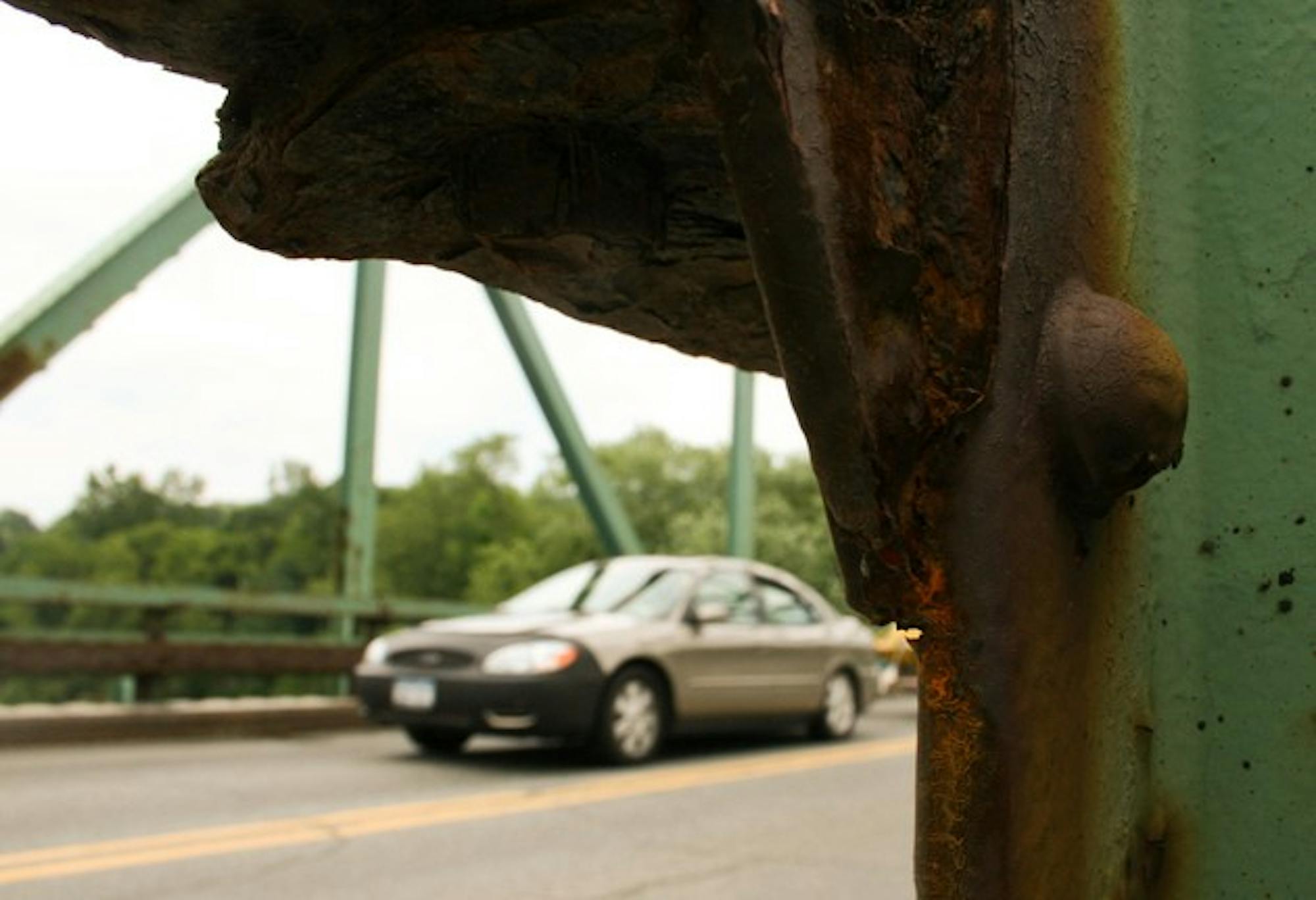Congressman Paul Hodes '72, D-N.H., surveyed the bridge on Monday with community leaders and representatives from the New Hampshire Department of Transportation.
"Clearly, the underside of the bridge looks like Swiss cheese, and so the safety of our citizens is paramount," Hodes said.
The bridge, built in 1936, handles 14,000 cars a day, which includes many heavy trucks that support West Lebanon industries, according to Mark Richardson, administrator of the New Hampshire Bureau of Bridge Design. The causeway is on the state's "red list" of 137 bridges that have structural deficiencies.
"It is a typical structure for that time period, but it is prone to collecting moisture and chlorides from road salts," Richardson said in a briefing at the site on Monday, adding later, "Most of the severe deterioration is below the roadway surface level, so it is very difficult to see as you walk across the sidewalk, and the typical person going by in a car or truck looks at the upper areas and says, 'what is wrong with this bridge, it must be fine.'"
Red list bridges are inspected every six months. A crew surveying the bridge a few weeks ago "realized the amount of deterioration had accelerated by quite a bit," Richardson said. This prompted the posting of a new weight limit at 10 tons, which excludes many large vehicles such as dump trucks.
While the bridge was originally slated for renovation in 2010, it is now unclear when construction will begin considering the extent of the deterioration and the possibility that the structure will need to be completely replaced, according to officials.
Officials are exploring two possibilities to limit the impact of the bridge restrictions. One option would involve opening the I-89 bridge in White River Junction, Vt. to heavy truck traffic. Such a move may be difficult, however, as weight limits on the Vermont side, which adhere to federal standards, are lower than those in New Hampshire.
Opening the I-89 crossing to heavy trucks will require a waiver from the Federal Highway Administration, which Hodes and his counterpart, Rep. Peter Welch, D-Vt, have requested.
"We have applied for that waiver, and the highway folks generally say that takes an act of Congress," Hodes said in a press conference at the Lebanon Fire Department. He continued later, "Having now been [in Congress] for almost a full term, I can tell you it sometimes does not happen as quickly as you would like."
Another option is to build a temporary span next to the current bridge. The crossing, however, would not be ready until next spring or summer, officials said. Building the temporary span is the more likely option since a second bridge is needed when the state begins work to replace the current bridge.
Hodes said Sen. John Sununu, R-N.H, has secured funding to begin to address the bridge problem, although it is unclear whether the funds can be used directly for a temporary structure. The funding directive is "vaguely worded," a Sununu representative at the press conference said.
As evidence of the effect of the bridge restrictions, officials at the press conference frequently had to raise their voices to compete with the sounds of the truck traffic passing outside the Lebanon Fire Department.
Hanover Town Manager Julia Griffin, who attended the briefing at the bridge, said Hanover will be directly affected by the change in traffic patterns.
"This is going to significantly increase by a factor of a couple hundred truck trips a day the number of heavy trucks we'll have moving through Hanover on Route 10 coming up from West Lebanon and down Wheelock Street over the Ledyard bridge, and then that same truck traffic heading south on Route 5 right through Wilder on the Vermont side," she said.
Hanover officials are concerned about how the truck traffic will affect road surfaces and congestion downtown, Griffin said. The town will have to "step up" enforcement efforts, she said, to ensure that truckers do not use weight-restricted side roads as shortcuts.
The bridge's deterioration limits the ability of Lebanon's fire department to respond to requests for "mutual aid" in Vermont, and vice versa.
"It is not uncommon to see [Hartford, Vt.] responding over here and Lebanon responding over there," Lebanon Mayor Karen Liot Hill '00 said. "In rural areas, we really rely on our friends and neighbors in times of trouble."
Officials also recognized that the bridge restrictions may have economic implications for local businesses.
"For businesses who are facing higher fuel costs and difficulties with credit in economically uncertain times, the added economic burden of having to send their trucks on different routes and spend more money on transportation hurts their bottom line," Hodes said.
Advance Transit also relies on the bridge, although Executive Director Van Chesnut said the restrictions should not affect medium size buses that use the structure.
"If [the bridge] gets worse, then we have a problem, but for now we don't expect any service disruption," he said.




